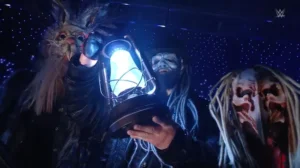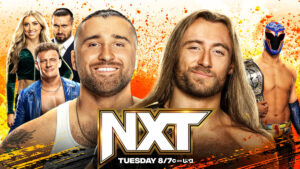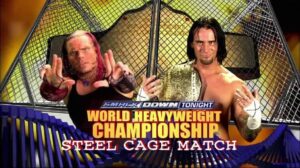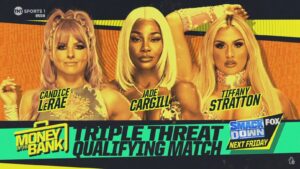Major League Wrestling has for years been a promotion that has been surviving rather than thriving. At several points in its history, when it looked like MLW would potentially breakout, build momentum and/or expand, something beyond the promotion’s control has stopped them.
AEW’s arrival in 2019 indirectly took aspects of MLW’s sport-orientated presentation and some of its prominent roster members, like former AEW Champion, Maxwell Jacob Friedman. The Pandemic strained the finances and resources of many wrestling companies. MLW was not exempt. Then, MLW’s CEO Court Bauer, made sued WWE. Bauer claimed WWE had used its influence to impact MLW’s TV rights deals that pulled from the company at the last minute. This led to a two-year lawsuit. When the company was reportedly on its “last legs”, the lawsuit ended this past December with a settlement.
MLW survives. Although in comparison to WWE and AEW it is a smaller-scale promotion, there are things MLW offers as an alternative. It has been a breeding ground and starting place for national exposure for various wrestlers. However, it has also been a breeding ground for ideas both new and old that give the promotion it’s uniqueness.
Some of these elements and ideas could even be the missing puzzle pieces that creative heads, Triple H and Tony Khan, could look to borrow from in order to help their promotions progress.
1) Sports-Orientated Presentation:
Your @AEW Rankings, as of 1/31/24: pic.twitter.com/LMAIQMzp1G
— Tony Khan (@TonyKhan) February 1, 2024
AEW is bringing back the rankings to return to a sport-centric product. This has both benefits and cons. Post-Kevin Dunn, there were noticeable changes to production at the Royal Rumble. Part of that presentation seemed to reflect a desire for a more sports-based feel.
Long-term, if either or both companies wanted inspiration, MLW’s boxing/MMA promotion style framework allow the promotion to both be sports-centric and yet house the unique range of out-their gimmicks and personalities that have always existed in wrestling.
How it helps:
In MLW the wrestlers, known as “fighters”, compete within their division based on their weight class or style. In the past, there was even a top-ten ranking for each division. League officials make fights in conjunction with the negotiations/politicking of “promoters” (managers) who represent the champions and challengers.
This approach means big matches, like boxing or MMA fights, are announced and promoted sometimes weeks in advance. Storylines then build more naturally with week-to-week developments. Some use sporting tropes like press conferences and interviews.
Others with more sports-entertainment elements or matches. When stipulations are added to matches, these also feel more natural. Like Khan’s booking, it also allows fans to invest in fantasy bookings for what might happen next. Some things are foreshadowed, which rewards paying attention.
Everything reminds fans that these wrestlers are fighting for championships and money and because the promoters want power. Commentary constantly discusses the action in the ring and backstage like a real sport. They discuss fighting styles, how results impact fighters’ chances of a championship shot, etc. It helps re-emphasise the sporting nature of the wrestling matches fans are watching.
When commentary reminded fans of Jacob Fatu’s family legacy and how dominance in the promotion while he was the MLW World Heavyweight Champion, it meant the fact he was wrestling on behalf of a terrorist-inspired faction was easier to swallow.
When commentary explains how much of a nasty deathmatch specialist Rickey Shane Page is, it makes more sense why RSP would also be in a violent horror-film-inspired cult. These kinds of touches would make the fiction easier to blend with reality. The type of things that would smooth the edges off supernatural gimmicks in The House of Black or in WWE wrestling models or Vikings.
2) Managers
Both WWE and AEW have managers on their rosters, but rarely does either promotion use them like the territories of the past. As mouthpieces and foils, yes. WWE’s Paul Heyman is performing of a lifetime on the Island of Relevance. In AEW, Prince Nana has finally found the recognition he deserves, dancing and being a humorous contrast to the sadistic Swerve Strickland’. These examples elevate their clients.
Yet are AEW’s use of Jake “The Snake” Roberts or Arn Anderson, do they elevate their clients? WWE’s overreliance more on General Managers and authority figures rather than managers has rarely gotten babyfaces over (outside of Steve Austin and Bryan Danielson, but that’s partly due to their talents- see my how and why some wrestlers ascend piece).
MLW’s sports league framework means that managers, in the guise of promoters, have a central role in storytelling, building babyface and getting heels heat.
How it helps:
Like in WWE, the politics are on full display on each weekly episode of Fusion. The promoters, like in real combat sports, book matches and events for their own purposes.
Promoters want to make more money and protect their investments and champions (wrestlers). The politics is justifiable in the narrative framework of the promotion. It gives a natural reason for storyline rivalries and events to happen with the need for soap opera drama, which had a place on the card, but it’s not the be-all of the promotion.
The promoters, like old-school managers, are heat magnets putting obstacles in the good guy’s way, making their clients feel more credible and elevating both in the process.
When acting politically to gain their wrestler’s championship opportunities, it creates a natural sense of injustice. Three out of the five members of the World Titan Federation (“Filthy” Tom Lawlor, Matt Cardona and Richard Holliday) have challenged for the MLW World Championship over the past few months.
Running this gauntlet has helped make Alex Kane, as the world champion, feel unstoppable with wins over these credible and very talented wrestlers who lose nothing.
Similarly, when promoters use their influence to block deserving title contenders, it creates a clear storyline: the “chase for the gold”. It makes the championship match feel earned.
Salina de la Renta has blocked middleweight championship contender Ichiban from a title opportunity against the champion, Rocky Romero. Having overcome multiple opponents (some from CMLL), beatdowns, beating Renta in a match by DQ and having his mask stolen, Ichiban is the clear underdog hero.
If Ichiban wins the belt, he is a deserving underdog. If Romero loses, it was justified, but if he retains, insert swear words!
3) Factions/Stables
Both AEW and WWE have used factions throughout their history to varying effect, but I would argue neither promotion has used them as effectively as MLW.
Triple H’s template for factions has become cookie-cutter. Factions are paradoxically at their most engaging when there is the threat that someone is defecting or being kicked out. It was the secret with The Bloodline, which has been replicated with The Judgement Day and now Damage CTRL.
AEW’s use of factions, at their best, drives compelling storylines like The Elite saga. Yet, at their worst, being grouped can make the individual wrestlers seem characterless, directionless and spinning their wheels. Again, The Elite’s 2023 is a good example where beyond their matches, all four men’s characters were stagnate.
How it helps:
The stables/factions reflect the personalities and motives of their promoters. World Titan Federation is a parody of early 90s Vince McMahon’s sport-entertainment obsession with large dominate, muscular wrestlers.
Comedy is blended with the physical threat. Promociones Dorado is a heel stable of Latin-centric wrestlers who relish in violence. Each group has different agendas and goals. Factions war has been common with conflicts tying into large-scale storylines that envelope the entire promotion.
CONTRA Unit is perhaps the best example. The terrorist inspired group controlled MLW before and during the Pandemic. The faction gave a clear enemy for everyone else, good or bad to face and try to overthrow. J
acob Fatu was presented as an unstoppable heavyweight monster before Roman Reign’s went tribal. Controlled the heavyweight division for two years as the champion, Contra clashed with The Von Erichs and Tom Lawlor in a long-running and heated feud.
Within factions MLW clearly structures each wrestler to have a role in the group and in the big narrative picture that the promotion is telling. Individually, each lower ranked member had a place on the card. Simon Gotch and Ikuro Kwon were gatekeepers for the midcard, who in defeat helped elevate up and coming young wrestlers.
Yet despite taking losses, this did not damage CONTRA’s credibility because Fatu remained undefeated and in control of the world championship. Until it was the right time for him to fall.
The bodyguard/heater, Mads Krüger, the imposing bodyguard became the final, literal obstacle for any challenger to contend with. When The Dynasty’s Alex Hammerstone finally beat the South African torturer, it meant Hammerstone as a character was ready to take the world championship.
This was MLW’s version of Cody Rhodes finishing his story against Fatu’s cousin at Wrestlemania, only with no rubber chicken.
More From LWOS Pro Wrestling
Header photo – MLW – Stay tuned to the Last Word on Pro Wrestling for more on this and other stories from around the world of wrestling, as they develop. You can always count on LWOPW to be on top of the major news in the wrestling world, as well as to provide you with analysis, previews, videos, interviews, and editorials on the wrestling world. MLW FUSION airs every Thursday on YouTube at 8 PM EST and every Saturday on beIN SPORTS at 10 PM EST.






